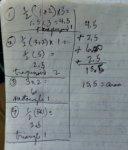allegansveritatem
Full Member
- Joined
- Jan 10, 2018
- Messages
- 962
Here is the problem:

I tried to solve this by adding the areas of those parts of the figure that seemed to contain whole squares:

The sign before the 12 is supposed to be the sign for "approximates". I suppose in calculus there are ways of working with this kind of problem but I have no calculus at all so...

I tried to solve this by adding the areas of those parts of the figure that seemed to contain whole squares:
The sign before the 12 is supposed to be the sign for "approximates". I suppose in calculus there are ways of working with this kind of problem but I have no calculus at all so...

